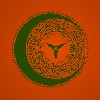HOME | DD
 CHIPMUNKEN — TL-676
CHIPMUNKEN — TL-676

Published: 2023-12-18 19:28:55 +0000 UTC; Views: 14474; Favourites: 77; Downloads: 0
Redirect to original
Description
In the 8th century, the Mandean faith of Mesopotamia underwent a revival, with increased proslytization by members. Rather than recognize them as a people of the book, the Umayyad Caliphate declared them to be unbelievers. The First Mandean Revolt occured in toward the end of that century, and though it was unsuccessful, it triggered a surge in new converts to the gnostic faith. The Second and Third Revolts were more succesful and an independent Mandean kingdom was carved out by 850. This radically changed the direction of Islamic growth, with an emphasis on expansion by means of individual prosyletizers rather than armies. In the following centuries, Islam would be brought by devout merchants to strange shores; to India, to East Africa, and farther afield to China and even the Atlantic Coast of Africa. In the modern day, Islamic states can be found on nearly every continent, from the mercantile states of the new world to the nuclear-armed ex-Somali colony of Dhulka Duyyulu Boodboodaya. Islam has, in this world, shed some of its Arabic heritage. Politicians from Islamic countries generally communicate in Indian Ocean Creole, a mixture of Arabic, Somali, Malay, and various Chinese dialects. Clerics in their home countries pray, preach, and read the Quran in their local tongues but communicate in Arabic with Muslims from abroad. In the Middle East, Islam was forced on the back foot as the Mandeans waged wars of conquest, eventually achieving their goal of conquering the Holy Land. The Mandeans aligned with the Christian Armenians, forging a dual empire that has survived the centuries and still lives on.The syncretic religion of Chrislam emerged out of post-Umayyad Hispania. Taking pieces of both its parent religions, Chrislam believed in both Jesus and Muhammad as important prophets and that the majority of both the New Testament and Quran are true. At first, the Christlamic Andalusian Emirate faced war with both Christian and Muslim powers, but it slowly came to dominate its neighbors, then all Hispania. In the 10th century, it launched wars of conquest north of the Pyrenees. The empire is now over 1000 years old but it has changed considerably since the early days. Feudalism in Europe has given way to a fairly equal society. Its soldiers, the fathidurs, spearheaded an age of transatlantic imperialism though Andalusia has since become a more peaceful state and is more interested in expansion into space than expansion at the expense of its neighbors. Chrislam is labelled as heretical by Christian and Muslim alike and it has had limited growth outside of Andalusia and what growth it has had has been in states that have not previously practiced Abrahamic faiths.
Eurasia was once dominated by a Mongolic state, the Great Uls and its successors are still quite powerful. The Great Uls was founded in the mid 12th century by Eldegai, a speaker of a Mongolic language that was adopted by Qipshak Turks after a period of slavery in Tibetan mines. Eldegai reshaped the steppe into his personal domain and a massive military camp, harnessing the Turks and Mongols as instruments to take revenge on those that had done him wrong. His new state was named for the eagle, becoming the Uls. Eldegai's successors continued his conquests and his grandson, Altun Ashugh, converted himself and his empire to Buddhism, allowing that religion to gain dominance over nearly all of northern Eurasia. The Eldegid Dynasty became extinct in the 16th century, leading to a series of massive, bloody civil wars and the establishment of a series of local kingdoms, the Chakrvates, across the once-mighty empire. A nominal emperor remained but in practice, the regional Chakravates held power. The end of the Great Uls came in the 18th century, as a Christian army from Europe launched an invasion of the westernmost Chakrvate, the Great Western Uls. The metropolis of Narjimarty was sacked despite the presence of warriors from across the entirety of the Uls cultural sphere. This set in motion a series of wars that would not end until the entire old empire was destroyed with no chance of further unity. The actions of the Great Uls have come to define much of a continent. Buddhism, brought to the empire by Altun Ashugh from southeast Asia, bloomed into the dominant faith of numerous peoples. The Mongol tongue spoken by Eldegai lives on and has been adopted far beyond its original home.
Being surrounded on all sides by unfriendly heretics (Buddhists, Chrislamics, and the Armeno-Mandeans) early modern Christian Europe developed a siege complex that has remained in place to the present. This tendency is most pronounced in the actions of the League of the Banner of Saint Barbara, which launched savage wars against the Great Western Uls and followed up that victory with wholescale ethnic cleansing in Eastern Europe. The Christian states of Europe no longer talk as eagerly of holy war as they once did but they are insular states that do not enjoy open and friendly relations with other faiths.
Africa has been shaped from the south and east by Islam and from the north and west by Chrislam and Christianity. Enterprising Arabs and Somalis brought their faith to the Cape, where it was picked up by the Khoisan peoples. Some of them founded the Imperium of the People That Pick Things Up, which became a massive empire, expanding across the Atlantic and deep into the African interior. Along the Indian Ocean coast, mixed Arab-Bantu-Somali states have flourished. From the Atlantic, European fathidurs established themselves along the coast, creating settler colonies and enslaving the local populations. This prompted the creation of large, centralized states in Africa, many of which are further protected by "leagues" explicitly designed to keep out potential European conquerors. One of the peoples that was unable to fight off the Europeans, the Igbo, converted to Buddhism, and their state, which eventually threw off the Norse, remains Buddhist to the present. To the northeast, the Kingdom of God exists, practicing a new religion syncretizing Islam, Buddhism, and native beliefs under the name of Spiritism.
The first transatlantic voyages were by Norse seamen, who sailed from their homeland to the volcanic island of Mundspallheim, the frigid island of Nifollheim, and then to the continent known as Turtle Island, which was called Sukhavati by the devout Buddhist seafarers. The Norse carved out an empire in the west, but intermarried with the native peoples while encouraging the spread of Buddhism. Disease ravaged the continent, but the Norse were few on the ground and gradually, populations rebalanced with the surviving natives adopting the most useful technologies of the newcomers to their shores. To the south, the Imperium of the People That Pick Things Up crossed the Atlantic, and built an empire in a similar way while native empires also grew. Finally, from the western ocean came Japanese refugees from the Uls conquest of the archipelago. They established Kinyama, a series of heavily populated coastal settlements that still dream of their lost homeland. The Andalusian, Engelish, and Irish fathidurs came to the hemisphere later on, seeking to build settler colonies and exploit the natives. They were able to establish beachheads but could not push very far inland as they faced well-armed and disease-resistant native armies. The natives of the interior founded the Turtle Island Confederacy, a massive, continent-spanning federation of diverse native groups aligned to prevent their conquest from outside the continent. This nation has survived several hundred years due to its vibrant democracy, though it has undergone several civil wars that threaten to tear the country apart but somehow never do. The Confederacy's thinkers established the Turtle Island Church in a bid to build continental unity through a single religious body to formalize a thousand forms of religious practice. The church has caught on in a number of parts of the Confederacy but is not practiced by anywhere near a majority of Turtle Islanders.
Technologically, this world is slightly ahead of OTL and can best be described as vaguely cyberpunk. Computing and biotech have far surpassed OTL, while urban sprawl is found all over the world. A switch to green technologies came earlier, so there is considerably less pollution than OTL. There is no single global culture, and different internets dominate different regions of the globe with little cross-communication between these subcultures. Part of the issues lies in the use of different scripts across the world: in Europe, Latin predominates, while much of Eurasia uses a form of the Old Uyghur alphabet later influenced from Southeast Asia and formalized by the Great Uls. Arabic script is also widespread, while Turtle Island uses a form of the Latin alphabet that is nearly incomprehensible to other states using that alphabet. Humans have walked on the Moon, Mars, and a number of other asteroids and satellites. The Moon has a number of scientific bases, while Martian colonies are sprouting up quickly.
Related content
Comments: 9

👍: 0 ⏩: 0

👍: 0 ⏩: 2

👍: 0 ⏩: 0

👍: 0 ⏩: 1

👍: 1 ⏩: 0

👍: 1 ⏩: 1

👍: 1 ⏩: 0

👍: 7 ⏩: 1

👍: 0 ⏩: 0

















